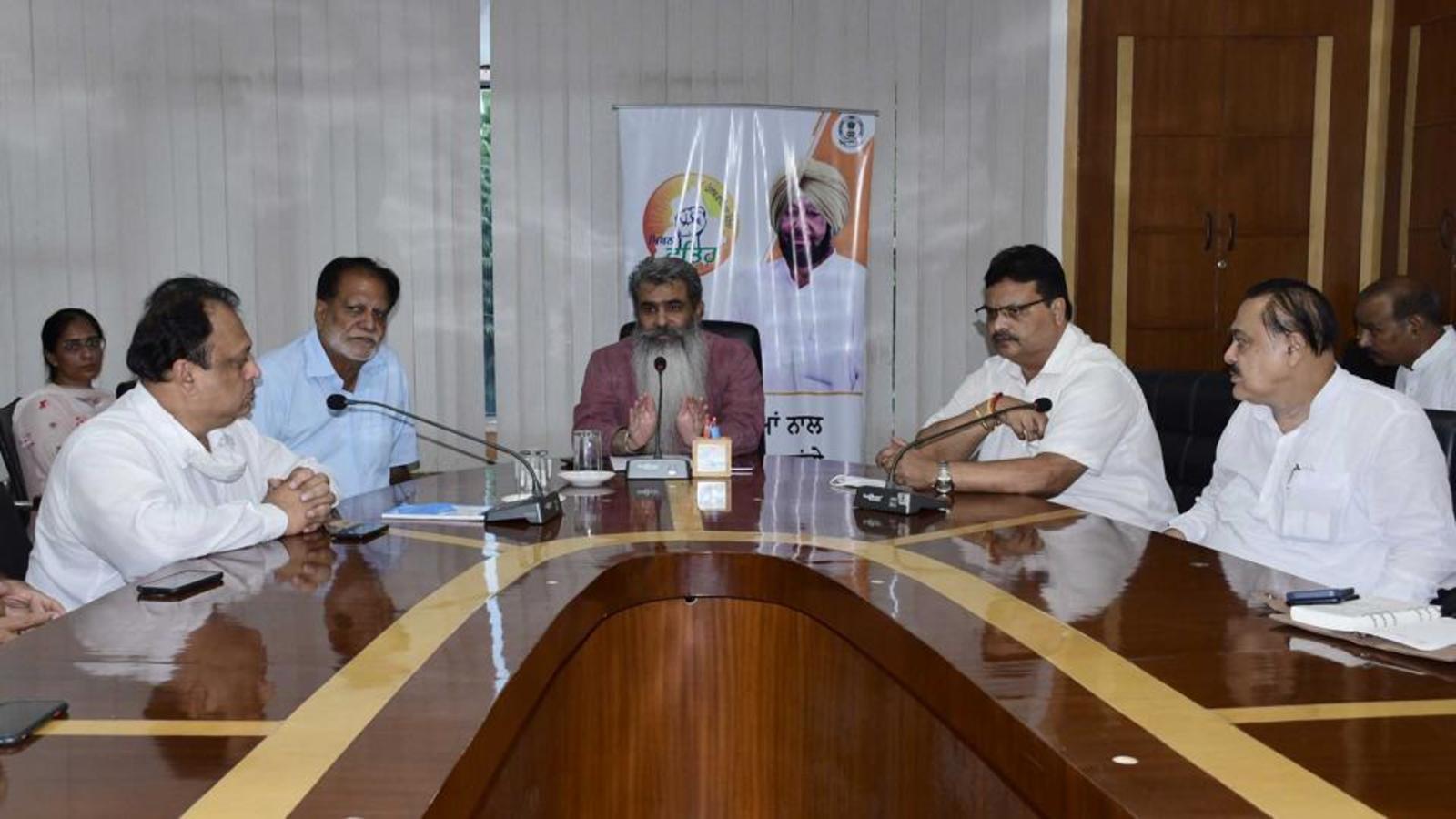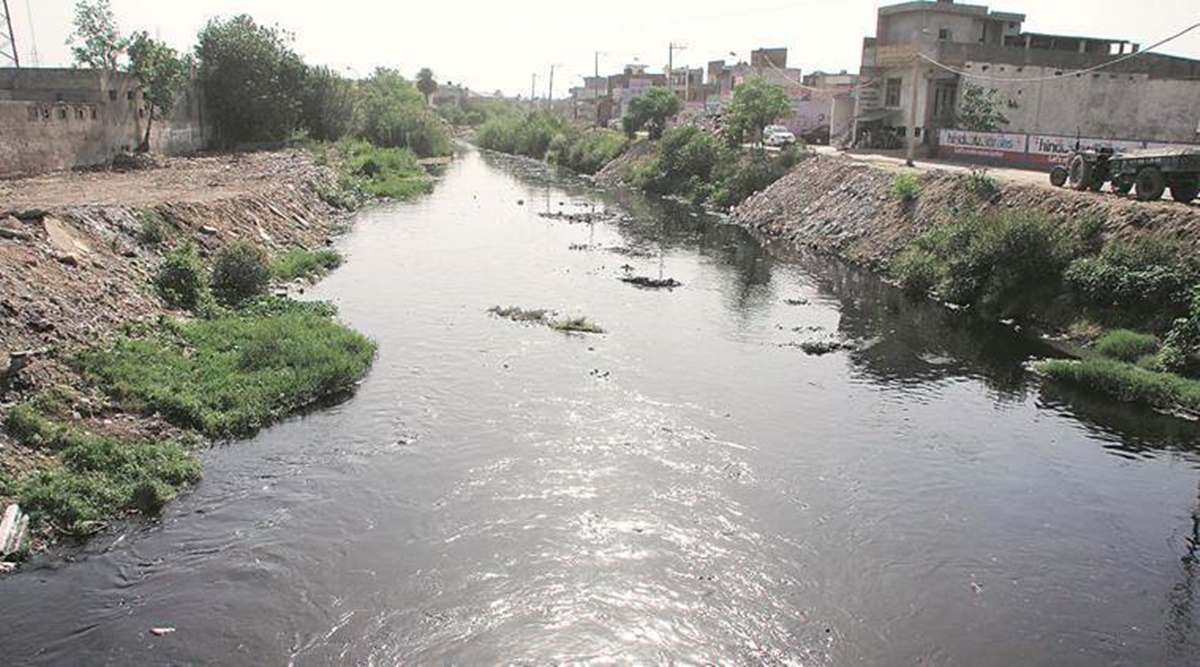Releasing freshwater into Buddha Nullah: Amid criticism, cabinet minister Ashu claims satisfactory results
 ]
]
With the authorities and state government facing flak over the release of freshwater into Buddha Nullah, cabinet minister Bharat Bhushan Ashu on Wednesday claimed that the project had started showing results with the nullah’s biochemical oxygen demand (BOD) and chemical oxygen demand (COD) levels reducing by nearly 70-80%.
The minister was conducting a meeting to review the ongoing project of rejuvenating the nullah at the municipal corporation’s (MC) Zone D office on Wednesday.
Ashu said after freshwater was released from the Neelon drain of Sirhind canal on August 22, the BOD and COD levels of the nullah dropped from 1,124 and 2,157 to 61 and 256, respectively, on Wednesday.
The officials of the special task force constituted for cleaning the nullah, Punjab Pollution Control Board (PPCB), and the civic body were present in the meeting. The industrialists, who are a part of the monitoring committee formed under the rejuvenation project, also participated.
The officials stated that while 200 cusecs of freshwater had to be released into the nullah in a phased manner, as of now 100 cusecs was being released daily. The officials stated that the BOD and COD levels will further improve after more water was released.
Ashu said, “There are some apprehensions in the minds of residents and activists, but we want to ensure that everything is being done with transparency. Releasing freshwater into the nullah is one component of the ₹650-crore project to rejuvenate the nullah and efforts are also being made to deal with sewer and dairy waste.”
Ashu stated that they had also invited some environmental activists including Col (retd) JS Gill, who is also a member of the STF for cleaning the nullah, and CM Lakhanpal, for discussions regarding apprehensions, but they were not available due to personal reasons.
He said that work had also commenced on two new sewage treatment plants (STPs) for treating domestic waters of total 285 MLD (Jamalpur 225 MLD and Balloke 60 MLD) capacity; rehabilitation of existing STPs with a treatment capacity of 418 MLD; two common effluent treatment plants (CETPs) for treatment of 6 MLD wastewater from two dairy complexes in Tajpur and Haibowal; six intermediate pumping stations; laying of 10-km pipeline and 10 years of operation and maintenance of entire infrastructure, which will be completed by December 2022.
Experts, environment activists raise concern
Experts and environment activists had earlier raised questions over the release of freshwater into the highly polluted nullah without eliminating the major sources of pollution.
Col (retd) JS Gill said, “We are not against the project as it was needed to be undertaken but the timing is not good. The MC should have first dealt with the pollution.”
“As there are still pollutants in the drain, releasing freshwater has sped up the process of polluting the Sutlej river. Pollutants including heavy metals will enter the Sutlej at a faster rate. The river is a source of drinking water for various districts of Rajasthan and southern parts of Punjab.”
Ludhiana: Buddha Nullah rejuvenation project begins with release of 200 cusecs of fresh water
 ]
]
The project to clean Ludhiana’s polluted ‘Buddha Nullah’ kick-started on Sunday, with 200 cusecs of freshwater being released into the polluted stream.
Samrala MLA, Amrik Singh Dhillon, Payal MLA, Lakhbir Singh Lakha, and Ludhiana Mayor, Balkar Singh Sandhu, on Sunday inaugurated the Rs 9.80 crore project of releasing at least 200 cusecs of freshwater into the stream daily.
Buddha Nullah is a seasonal water stream, which runs through the Malwa region of Punjab, and after passing through the highly populated Ludhiana district, it drains into the Sutlej River, a tributary of the Indus.
On Sunday, presiding over the inauguration of the project near Neelon village, the MLAs and Mayor said that Buddha Nullah was being cleaned as part of Punjab government’s Rs 650-crore project. Clean canal water will be released into the drain daily — through Neelon Drain of Sirhind Canal — so that the stream can regain its former glory.
They said that under the project, the executing agency — the state water resources department — using sheet piling technology, has constructed an escape regulator to carry 200 cusecs water from Sirhind Canal daily. The project has been funded by Municipal Corporation Ludhiana and Punjab Pollution Control Board (PPCB).
They said that Punjab government was committed to revive the original Buddha Dariya and restore its pristine glory and this is just the beginning of this gigantic task that aims to wipe out the toxic substances from the drain.
They said that the project has been initiated to check the free discharge of domestic waste into the Buddha Nullah through its entire 14-km stretch, cutting through municipal limits, and to ensure that only treated water flows into the stream.
They told that the work has already been commenced on two new Sewage Treatment Plants (STPs) for treating domestic waters of total capacity 285 MLD (Jamalpur 225 MLD and Balloke 60 MLD), rehabilitation of existing STPs with a treatment capacity of 418 MLD, two effluent treatment plants (ETPs) for treatment of 6 MLD wastewater from two dairy complex in Tajpur and Haibowal, six intermediate pumping stations, laying of 10-km pipeline and 10 years of operation and maintenance of entire infrastructure under Rs 650-crore Budha Nullah rejuvenation project which will be completed by December 2022.
Buddha Nullah Task Force member writes to Punjab CM
 ]
]
Tribune News Service
Ludhiana, August 21
As work to release 200 cusecs of fresh water into the Buddha Nullah through the Neelon drain of the Sirhind canal is to be started tomorrow, a member of the Buddha Nullah Task Force has written to the Chief Minister.
Sharing his concern, Col (retd) Jasjit Singh Gill suggested that the Rejuvenation of Buddha Nullah Project must be completed before releasing the fresh water.
“Tomorrow, 200 cusecs of water will be released into the Buddha Nullah for achieving one-time dilution of polluted water and flushing out majority of it. Actually the Rs 650-crore project (to rejuvenate the nullah) has changed nothing on ground, other than three CETPs getting commissioned (which are not part of the Rs 650-crore project). Sewage from 14 MC sewer outlets, dairy waste and above all tonnes of floating solid waste still remain in the Buddha Nullah,” he stated.
The retired Colonel said, “This waste, which was to go into the Sutlej at a very slow pace otherwise, will be flushed into the river in one go if 200 cusecs of water is released now. The water will take millions of litres of dyeing industry chemicals in one go to the Harike bird sanctuary. It will affect the aquatic life, whatever of it is left in the Sutlej. It will take sewage, carrying millions of bacteria, to many drinking water sources emanating from the Sutlej in Punjab and Rajasthan.”
“Before releasing fresh water into the Buddha Nullah, the rejuvenation project should be completed and functioning of all CETPs should be ensured. No dairy or sewage waste should flow into the Sutlej. Water from dyeing and electroplating industry should be tapped and treated, which will happen only when CETPs function properly,” Gill added.